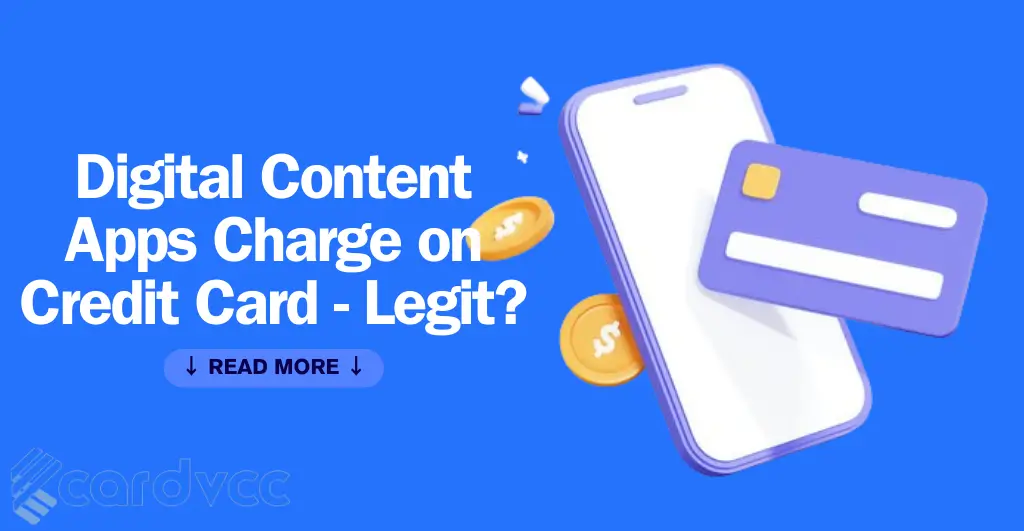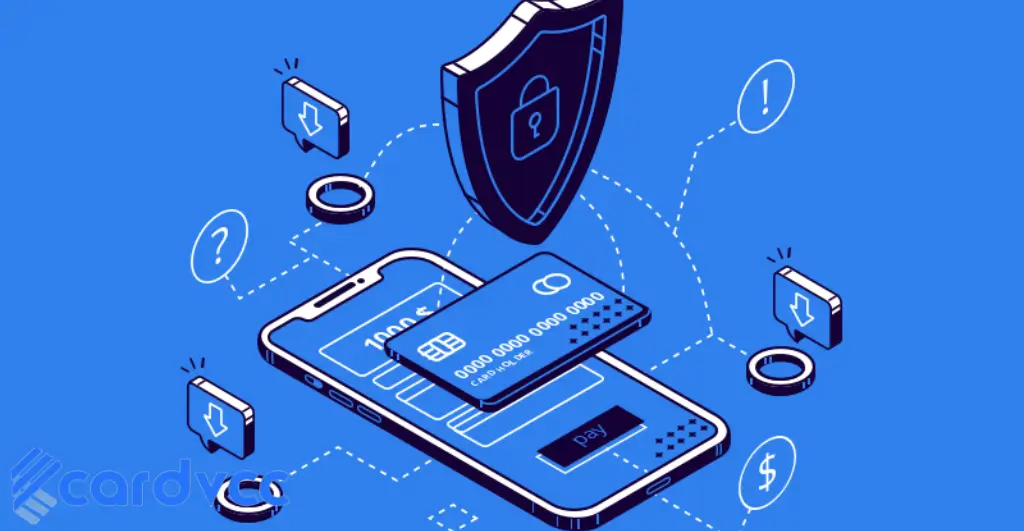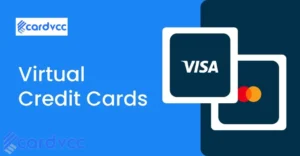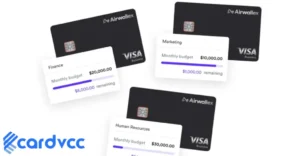Digital content apps may charge your credit card without notice, as some apps automatically renew subscriptions. In such cases, you may need to contact customer service to request a refund or cancel the subscription.

With the rise of digital content consumption, many people have turned to apps for on-demand music, video streaming, gaming, and more. These apps typically require a subscription to unlock their full features. However, it’s not uncommon for consumers to be unaware of related subscription fees, as some apps will automatically renew their subscriptions every month or year.
This can lead to unexpected charges on your credit card. In such cases, if you wish to cancel a subscription or request a refund, you will need to contact customer service.
Introduction To Digital Content Apps
Digital content apps charge directly on a user’s linked credit card, granting easy access to various online content services such as streaming, news, and music without the hassle of card input repetitively. These apps are a convenient way of consuming content in today’s digital age.
Digital content apps are software applications that provide users with access to various types of digital content such as music, movies, e-books, and more. They are gaining popularity among people of all ages as they allow users to conveniently access their desired content on their mobile devices or computers.
These apps are designed to make it easier for users to subscribe to different content categories using a single payment method. In this post, we will look at what digital content apps are, how they are commonly used, and the charges associated with them.
What Are Digital Content Apps?
Digital content apps are software applications that users can download and install on their mobile devices or computers to access different types of digital content. Normally, these apps organize the content into categories to make it easier for users to access what they are looking for. Examples of such apps include Spotify, Netflix, Kindle, and Podcast Addict.
One of the main features of digital content apps is that they offer a subscription model, where customers pay for the content they access, usually monthly or annually. The payments are automatically charged to the user’s credit card or other payment methods associated with their account.
How Are Digital Content Apps Commonly Used?
Digital content apps are commonly used by people who want to access their favorite content conveniently. For music lovers, apps like Spotify and Apple Music offer a vast library of music that can be streamed or downloaded. For movie enthusiasts, Netflix and Hulu provide access to exclusive movies and TV shows.
E-books are also accessible through digital content apps such as Kindle. People can access their favorite books, read them on their mobile devices, and take notes while on the go. Podcasts are also accessible using apps such as Podcast Addict. Users can listen to their favorite podcasts and even subscribe to new ones.
Digital content apps offer convenience, comfort, and fast access to various types of digital media. The payment model of these apps is easy and hassle-free as the user’s credit card gets charged automatically. These apps can provide endless hours of entertainment for people of all ages, making them a must-have on mobile devices and computers.
Overview Of Credit Card Payments On Digital Content Apps
Credit card payments are commonly used to charge for digital content apps. Customers can easily pay for content with their cards through an app, making purchasing simple and fast.
As we all know, purchasing digital content such as music, movies, games, and apps has become quite common on our mobile devices. It is now easy to access various digital content apps through app stores such as Google Play Store, Apple App Store, and Microsoft Store.
While some of these apps are free, others require payment before accessing their content. Most digital content apps use credit card payments as the primary payment method, which is convenient for users. However, not everyone understands why digital content apps use credit card payments and the benefits and risks associated with such payments.
Why Do Digital Content Apps Use Credit Card Payments?
Digital content apps use credit card payments as the primary payment method for various reasons. One of the reasons is that it is a secure and reliable payment method. Most apps require users to enter their credit card details which are encrypted and stored in secure servers for future transactions.
This means that users can make purchases with a simple click since their payment details are already on file. Additionally, credit card payments can be processed automatically, and digital content apps can receive payments in real time.
Benefits Of Credit Card Payments For Digital Content Apps
Apart from being secure and reliable, credit card payments offer various benefits to digital content apps. One of the benefits is that it is a widely accepted payment method. Credit card payments are accepted worldwide, and digital content apps can reach a broad audience.
Additionally, credit card payments allow digital content apps to offer subscription plans and one-time purchases that can increase their revenue streams. Furthermore, credit cards allow for flexible pricing plans and transparency in transactions.
Risks Of Credit Card Payments For Digital Content Apps
Despite the benefits, credit card payments can be risky for digital content apps. One of the risks is that credit card information can be stolen or used fraudulently by hackers. These breaches can lead to reputational damage and loss of users as they may lose trust in the app’s security. Moreover, chargebacks are another risk associated with credit card payments.
Chargebacks occur when users dispute charges made on their credit cards, and digital content apps must refund the money or lose the amount plus a chargeback fee. Finally, credit card payments involve fees, including transaction fees, chargeback fees, and interchange fees, which can reduce profitability.
Credit card payments have become the primary payment method for digital content apps because they are secure, reliable, flexible, and globally accepted. However, digital content apps must ensure that they take appropriate measures to protect user payment information from breaches and fraud. The risks associated with credit card payments should not be overlooked, and digital content apps must find ways to mitigate these risks to maintain trust and profitability.
Factors That Affect Credit Card Payments For Digital Content Apps
Online payment methods, and credit card payments, in particular, are widely used to purchase digital content apps. However, several factors can affect these payments, including card limit, the validity of card number, billing address accuracy, and payment gateway restrictions. Understanding these factors can help ensure successful transactions for customers and businesses alike.
Factors that Affect Credit Card Payments for Digital Content Apps To enjoy premium features on digital content apps, users often have to pay with their credit cards. While making payments online, users rely on the safety and security of the payment gateway. However, certain factors affect credit card payments on digital content apps, which we will discuss in this section.
Pricing Models For Digital Content Apps
Digital content apps employ diverse pricing models to cater to different audiences. Subscription-based models where users pay a monthly or annual fee for access to premium content are popular. Freemium models, where some features are free, and premium features require payment, are also common. Other pricing models include pay-per-use, paywall, and sponsorship-based models. Pricing models impact credit card payments by affecting the amount of payment required, and the frequency of payments.
Security Measures For Credit Card Payments
Credit card fraud is a significant concern for digital content app users. App providers can ensure secure transactions through multiple security measures. The use of SSL encryption on payment pages protects payment information from theft.
Tokenization replaces sensitive cardholder data with non-sensitive tokens, ensuring that payment information is not stored on the app’s servers. Two-factor authentication is an additional security measure that can be implemented to confirm the user’s identity. These security measures encourage confidence in the app by creating a secure payment environment.
Usability And Convenience For Credit Card Payments
Usability and convenience play vital roles in the user’s decision to use credit cards for payment. Users prefer apps that offer a seamless payment experience without any obstruction. App providers can optimize the payment interface by creating a user-friendly interface that is easy to navigate, ensures quick payment processing, and works with different types of credit cards. Offering a ‘Save my card’ option that allows users to save their payment information for future use also enhances convenience for users.
To ensure successful and secure credit card payments on digital content apps, app providers must employ efficient pricing models, and security measures, and ensure usability and convenience for their users.

User Experience And Navigation For Credit Card Payments On Digital Content Apps
Optimizing user experience and navigation for credit card payments on digital content apps can ensure a seamless and hassle-free transaction process. By designing a user-friendly interface and incorporating secure payment options, users can easily purchase and access the content they desire.
Designing The User Interface For Credit Card Payment Process
Digital content apps have become popular due to their amazing user experience. However, when it comes to payment processing, users might experience challenges. Designing a user interface for credit card payment processing requires careful consideration.
The user interface must be easy to use and navigate, ensuring a seamless payment process. The interface must display all the necessary information clearly, including the charges and any additional fees. It should also incorporate visual aids, such as images or videos, to make it easier for users to understand the payment process.
Creating A Smooth Checkout Process For Credit Card Payments
For digital content apps, the checkout process is an essential part of the user experience. Creating a smooth checkout process for credit card payments can increase customer satisfaction and reduce cart abandonment rates. The checkout process should be simple, allowing users to complete their transactions quickly.
This includes providing a clear summary of the items in the cart, the total price, and any applicable taxes or fees. During the checkout process, users should also be able to access their payment information easily, including the option to edit or remove it.
Overall, designing an excellent user experience and smooth navigation for credit card payments on digital content apps is vital. A well-designed user interface and checkout process can significantly improve the overall user experience and increase customer satisfaction.
By creating a smooth payment process, digital content apps can provide users with a hassle-free shopping experience and encourage repeat business. Therefore, it’s important to continually review and improve the payment process for digital content apps, ensuring that it’s user-friendly and efficient.
Strategies For Managing Credit Card Payment Processing For Digital Content Apps
Proper management of credit card payment processing is crucial for digital content apps charging for their products. With various strategies like implementing secure payment methods, offering discounts and promotions, and monitoring transaction data, businesses can optimize their payment processing systems and improve customer experience.
Finding The Right Payment Processor For Digital Content Apps
Managing credit card payment processing for digital content apps can be challenging, especially given the risk of fraud and the need to ensure payment security. One of the first strategies for managing credit card payment processing for digital content apps is finding the right payment processor.
Some essential factors that you should consider when choosing a payment processor for digital content apps include fees, payment options, and security features. When selecting a payment processor for digital content apps, it is essential to choose a processor that offers seamless integration with your app and provides a user-friendly checkout process.
Additionally, you should ensure that your payment processor is compatible with multiple devices and operating systems, making it easier for your customers to make payments regardless of their device preference.
Implementing Effective Fraud Detection And Prevention Systems
Fraudulent transactions can disrupt your revenue stream and tarnish your brand image. Therefore, implementing effective fraud detection and prevention systems should be a top priority for managing credit card payment processing for digital content apps. Anti-fraud tools help you identify and prevent fraudulent transactions, ensuring payment security for your customers.
There are many anti-fraud tools available in the market that can help you safeguard your payment processing, such as address verification systems, card security codes, and IP geolocation. Additionally, implementing multi-factor authentication, such as biometric and two-factor authentication, can strengthen your payment security further.
Managing credit card payment processing for digital content apps requires careful consideration of payment processors and anti-fraud tools that can help you ensure payment security for your customers. Choosing an appropriate payment processor and implementing effective fraud detection and prevention systems can minimize the risks of fraudulent transactions, safeguard your payment processing, and build trust among your customers.
Customer Support And Refund Policies For Credit Card Payments On Digital Content Apps
As digital content continues to gain popularity, digital content apps have become a go-to option for consumers looking to access premium content with the click of a button. However, as convenient as this may be, customers often find themselves stranded when they encounter issues with credit card payments on these apps. It is crucial for digital content apps to offer reliable customer support and establish clear refund policies for credit card payments to boost customer satisfaction and loyalty.
Offering 24/7 Customer Support For Credit Card Payment Issues
There is nothing more frustrating than encountering payment issues and not being able to get timely assistance. Digital content apps must prioritize offering 24/7 customer support to handle credit card payment issues. This helps customers get quick solutions to their problems and restores their confidence in the app. Appropriate communication channels such as email, a toll-free number, or live chat must be established to ensure that customers can reach the support team as quickly as possible.
Establishing A Clear Refund Policy For Credit Card Payments
Issues with credit card payments happen, and when they do, digital content apps need to have a clear refund policy that puts customers at ease. It is imperative to explicitly lay out all terms and conditions for refunds and when customers can initiate a request. Ensuring this information is readily available forms part of effective communication with customers and plays a vital role in keeping them loyal to the app. A clear refund policy also helps to reduce chargebacks which can be detrimental to app owners.
- Always be available to handle queries and concerns, ensuring customer satisfaction and avoiding chargebacks
- Clear, concise, and easy-to-understand communication is crucial in establishing customer trust
- Provide ample channels of communication for customers.
Ensuring that digital content apps provide reliable customer support and establish clear refund policies for credit card payments sets the foundation for a positive experience for customers. This ultimately leads to increased user satisfaction, loyalty, and increased growth for digital app owners.

Emerging Trends In Credit Card Payments For Digital Content Apps
Digital content apps are increasingly adopting credit card payments as their preferred payment method due to their convenience and widespread use. This shift embodies the emerging trend in the digital content industry towards more seamless payment processes.
Digital content has become immensely popular over the last few years. Online gaming, music and video streaming, and e-books are just some of the examples of digital content apps that have amassed millions of users. Due to the convenience these apps offer, customers are willing to pay for the content they want to consume.
This has led to a rise in the demand for secure and hassle-free payment options. Credit card payments have been the most preferred payment mode for digital content apps. However, with the evolving payment ecosystem, emerging trends have disrupted this market, resulting in more innovative payment solutions.
Integration With Digital Wallets
A digital wallet is an electronic device or an online service that enables online transactions, making it a convenient payment option for digital content apps. With the increasing usage of smartphones, digital wallet adoption has been on the rise. Providers such as Apple, Google, and PayPal offer digital wallets that allow customers to store and use their debit/credit card information.
This means that customers do not have to enter their card details manually for every transaction they make, improving the user experience. Digital content app developers can now integrate these digital wallets with their apps, thus providing a secure and easy payment gateway to their users.
Alternative Payment Methods For Digital Content Apps
Credit cards, while being convenient, are not always accessible to everyone. Some customers prefer to use alternative payment methods that are more accessible, secure, and anonymous. One such alternative payment method is cryptocurrency.
Developers of digital content apps can now integrate cryptocurrency payment options, allowing users to make quick and secure payments. Micropayment solutions such as mobile payment apps and prepaid cards also provide convenient payment options when it comes to buying digital content in smaller amounts.
This trend is expected to rise in the future, and developers need to integrate alternate payment methods along with credit card payments to cater to different customer preferences.
Digital content apps require payment solutions that are secure, convenient, and accessible. As emerging payment trends continue to disrupt the market, developers need to keep up and provide payment options that enhance customer experience. By integrating diverse payment options, digital content apps can cater to different user preferences, expanding their customer base and increasing their revenue.
Frequently Asked Questions On Digital Content Apps Charge On Credit Card
What Is This Charge On My Card?
This charge on your card is likely from a purchase or subscription. Check the name of the charge and contact the company or merchant to confirm the details of the transaction.
Why Am I Getting Google Services Charge On My Credit Card?
If you have a Google account for any of its services (like Google Drive or Gmail), you may see a Google services charge on your credit card. This happens if you’ve purchased something from Google, like an app or a subscription.
What Is An Act Charge On My Credit Card?
An act charge on your credit card is a fee charged by the merchant or vendor for processing a transaction. It could include fees for using a card, foreign transactions, or cash advances. Generally, the fee is a percentage of the total transaction amount and is listed as a separate line item on your credit card statement.
What Is The 2 Dollar Charge On Google Services?
The $2 charge on Google services is an authorization hold to verify your payment method. It’s a temporary charge that’s refunded within a few days. It doesn’t get charged to your account, but it’s just a way for Google to ensure that your payment method is valid.
Conclusion
With the increasing popularity of digital content, it is important to consider the payment methods used by various apps. Charging on credit cards has become a common option for users. However, it is essential for users to be aware of the security risks involved and to ensure that they are using a trustworthy app.
As technology evolves, we can expect to see even more payment options for digital content apps in the future.







